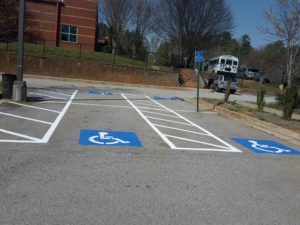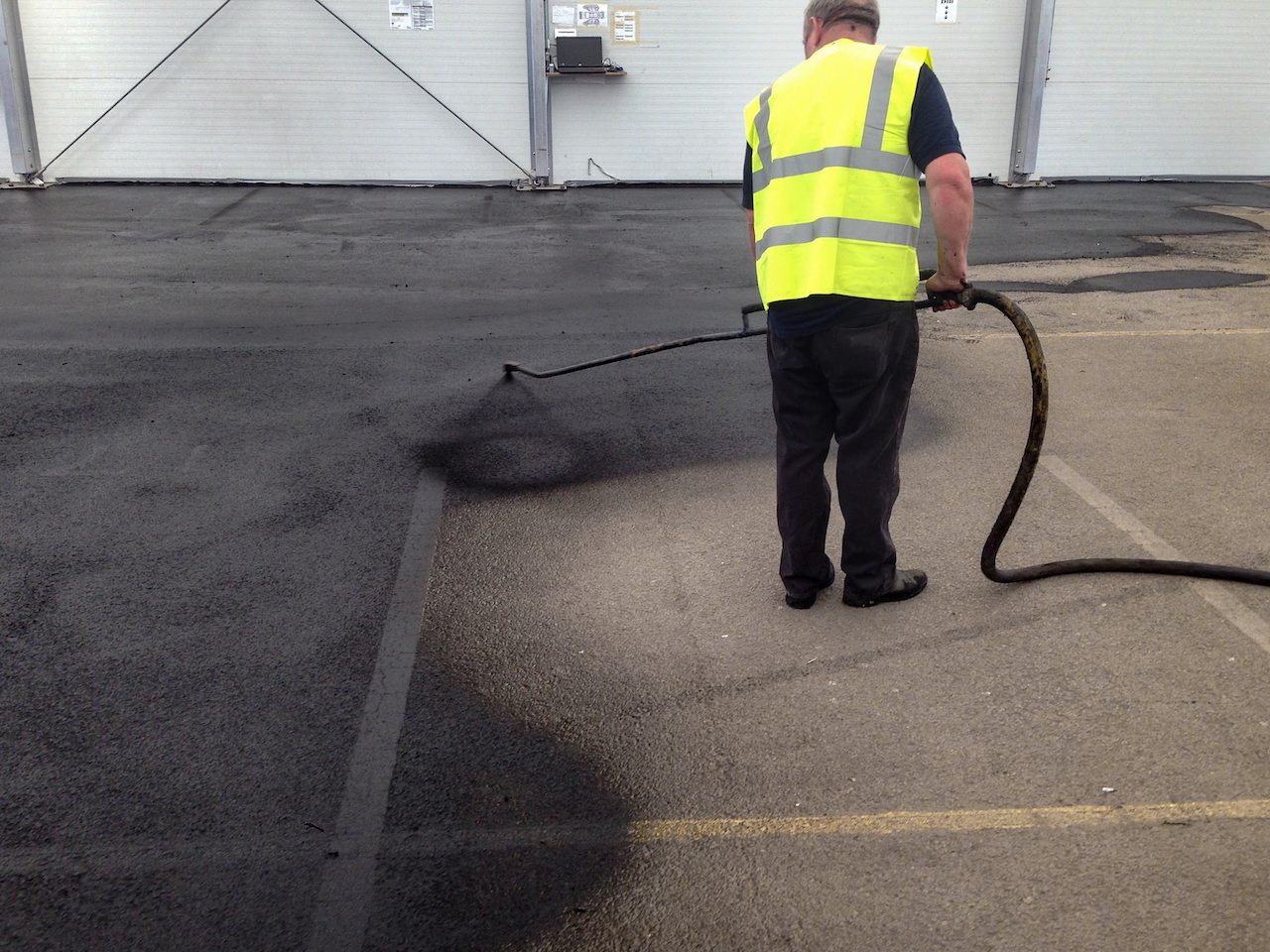
The History of Parking Lot Striping – Materials Used to Mark Traffic Lanes
When roads were merely dusty paths and vehicles were drawn by oxen or horses, lane markers were rarely used. Occasionally, stones would be piled up in the center as a divider, a wall would be built or shrubbery would be planted. In ancient times, a few civilizations constructed brick or stone roads that featured painted rocks to mark the center.
With the arrival of the automobile, asphalt and concrete roads became a necessity. To reduce the number of accidents caused by drivers who veered from their lanes, painted lines were used to divide the paths of travel. Early paints often contained lead, and many also contained solvents that have since been banned in some locations because they posed environmental risks.
Today, water-based paints or thermoplastic markings are used on pavement. Water-based paints are less durable than thermoplastic marking systems. Depending on the volume of traffic, water-based paints have a life of two months to four years, so they are more suitable for lightly traveled areas or as temporary markings. Thermoplastic markings usually last for six to eight years, so they are normally more economical in the long run.
Pavement Marking Pioneers
The year was 1911, and the place was Wayne County, Michigan. A high-ranking member of the county’s road department saw a leaky milk truck leaving a white trail as it moved down the street. Inspired, the official arranged to have a center stripe painted on a section of road that had been the location of several accidents and close calls. This is the first documented case of pavement markings in America.
In 1917, Michigan, Oregon and California adopted standards for pavement markings on state highways. City streets and county roads were free to develop their own standards, but they had to pay for marking the pavements under their control. Some local governments were reluctant to provide funding for pavement markings, so private citizens sometimes furnished the paint and the labor.
With every local government and each state adopting different standards, pavement markings became a confusing patchwork. Center stripes could be painted white or yellow, and they could be solid lines or dashes. In some areas, a solid line painted with either color meant that no passing was allowed, but in other areas, no-passing zones were marked with a broken line.
Setting a National Standard
The federal government decided that a standardized system of pavement markings was needed for highways built with federal funds. Federal standards called for a white center stripe, but counties and municipalities did not have to comply when marking county roads or city streets. Although the federal standards managed to foster a degree of uniformity, the patchwork system of road markings persisted until 1971. That was the year that the U.S. Department of Transportation literally wrote the book on pavement markings, publishing a manual with detailed specifications that included paint colors and whether to use solid or broken lines. Although areas still exist in which different standards are used, most of the nation’s roads follow this manual. Yellow lines are used to separate traffic flowing in opposite directions, and solid lines are used to denote no-passing zones. White lines are reserved for areas in which traffic is flowing in the same direction. Drivers no longer have to interpret an array of pavement markings when traveling between states, which improves safety by eliminating the confusion associated with widely different standards.
Let MH Greeson Help with Your Pavement Markings
MH Greeson Paving is an asphalt paving contractor that serves customers in the Atlanta area and many other locations in North Georgia. We offer a wide range of asphalt maintenance services, including parking lot striping, asphalt repairs and sealcoating. Our highly qualified crews have extensive experience, a dedication to quality and a commitment to customer service. If you would like to receive a free estimate, you can complete our online form or call 770-335-2983.




